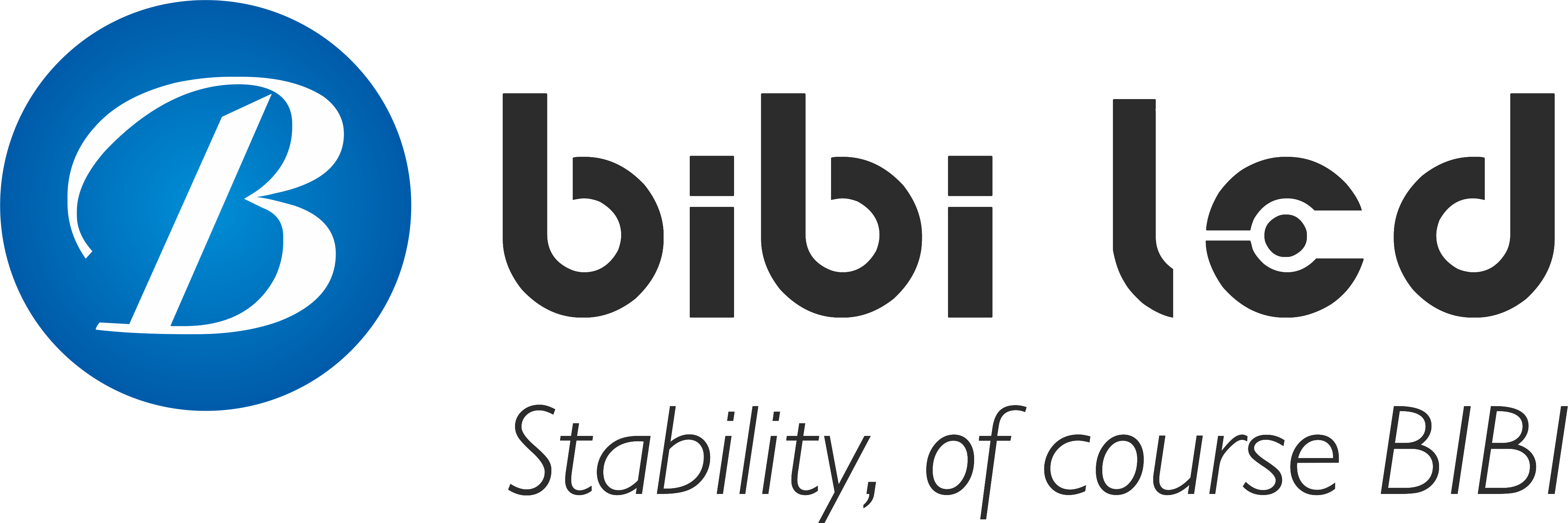介绍
As a powerful visual communication tool, LED屏幕 are becoming a key means for brands to increase exposure.
But do you know how to maximize the effectiveness of LED screens? This article will reveal the key factors for brands to use LED screens to increase exposure, helping you unlock new marketing codes!
目录
Factor 1: Choose LED screens that are suitable for the location
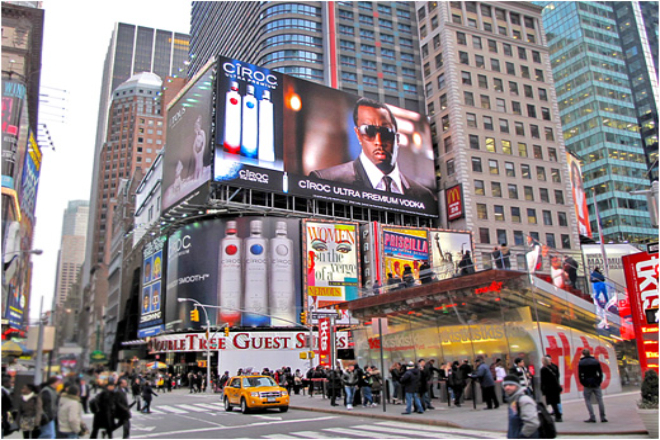
1). Traffic flow is a key consideration
Brands should choose places with a lot of people to place LED displays so that more people can see them.
For example, Times Square in New York is one of the most lively places in the world, with people coming and going every day.
Apple has placed a large screen there to display its new mobile phones, tablets, etc.
Think about it, those technology fans and fashion gurus passing by will definitely be attracted, which is a super big advertisement for the brand!
If you target young people, you have to go to places they often go, such as creative parks and e-sports halls, where young people gather.
They are very interested in new things, and the brand information will definitely catch their attention once it is displayed.
2) The visibility of the target audience is also important
LED displays should be placed where everyone can see them at a glance, about 2-3 meters high, and don’t let anything block them.
If placed outdoors, it should be higher and more prominent to attract people. Take London’s Trafalgar Square, for example. The surrounding buildings are not high, and the large screen in the middle of the square is particularly eye-catching.
Coca-Cola put a large screen there. The advertising picture is cheerful and energetic.
People passing by can see it at a glance, and their mood will also improve. Maybe they will think about buying a bottle to try.
Moreover, the screen must be placed on the road where people often walk, so that everyone can easily see the advertisement.
3). An environment that matches the brand image is an important factor in increasing exposure.
High-end luxury brands must find a place that matches their image to place LED screens, so that they can appear more upscale.
For example, the lobby of the Burj Al Arab in Dubai is a representative of luxury, and the environment is particularly luxurious.
Cartier displays its jewelry on the screen there, which perfectly matches the style of the hotel.
High-end customers staying in the hotel will definitely have a deeper impression of the brand when they see it.
Mass consumer brands are different. They must be placed in places close to life, such as the surrounding communities and subway stations.
For example, placing screens in subway station passages allows all kinds of passengers to see advertisements.
Brands like KFC and McDonald’s are just right for promotion in such places, so that people can see them on their way to and from work, and maybe they will think about eating a hamburger or drinking a Coke.
Factor 2: The content played on the LED screen
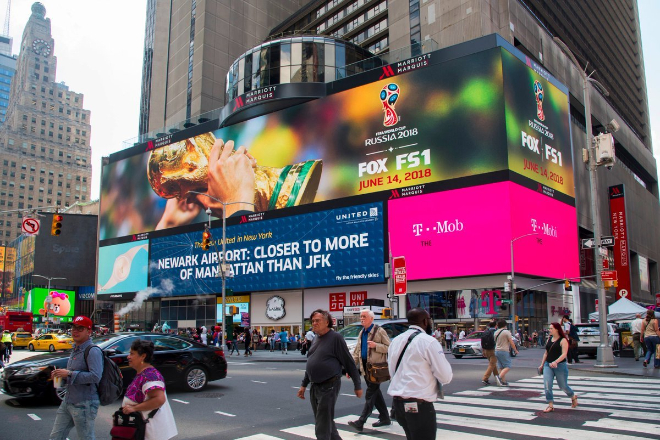
1). Make the content beautiful and eye-catching
If you want to attract people, you have to use good-looking color combinations.
For example, on the streets of South Korea, some LED displays use bright white with dark blue, or bright red with pure black. Once this sharp contrast is lit up, it can catch people’s attention.
Moreover, the color must match the feeling of the brand. If it is a technology brand, use blue and white tones to appear both technological and clean.
Don’t underestimate animations and videos. Moving pictures are much better than rigid pictures.
For example, in New York’s Times Square, Coca-Cola’s advertisements are particularly exciting.
A huge Coke bottle first appeared on the LED screen. As the animation progressed, the Coke bottle slowly opened, and bubbling Coke poured out.
The splashing water droplets sparkled in the sun. Then the screen switched to a group of young people drinking Coke in the sun.
The picture was vivid and lively, making people remember the brand at a glance.
2). The information must be simple and direct
Don’t pile up a lot of text on the screen, the audience will not be patient enough to read it. Just pick out the key points, such as brand name, product highlights, and promotions, and write them out in the simplest words.
For example, for a new mobile phone, write “xxx new mobile phone, super long battery life, buy now super cost-effective!” People can understand it at a glance.
When displaying, you can divide it into levels.
First show the brand logo and product pictures, such as Apple’s advertisement, a simple Apple logo appears on the screen first, and then a high-definition picture of the new mobile phone.
Then simply add some text descriptions, such as “Extremely long battery life, performance upgrade”, and finally put those minor information.
For example, promotion details, in small words in the corner of the screen, such as “Limited time offer, instant discount of XXX yuan”.
3). The content should be creative and tell a story.
If the content is interesting, the audience will remember it more easily. For example, you can make a short video to tell the story behind the brand’s products, or show what changes have happened to a user after using the product.
For example, in a fashionable district in Paris, there is a beauty brand advertisement that is very touching.
A girl appears on the screen first, and her skin looks a little dull. Then the screen switches to a scene where she uses the brand’s skin care products, and then her skin gradually becomes smooth and translucent.
Finally, the brand logo and product packaging appear, accompanied by the phrase “Beauty starts here”, which is impressive.
You can also combine it with current hot spots. For example, when summer comes, food brands can talk about how the products can help lose weight and how to cool down.
For example, on the beach in Sydney, there is an ice cream brand advertisement that is particularly appropriate. A hot beach scene appears on the screen, and people are sweating profusely under the scorching sun.
Then an ice cream appears with the words “Cool and cool down, one bite is refreshing to the end”, which makes people want to buy one to try.
Factor 3: Brand synergy and integrated marketing
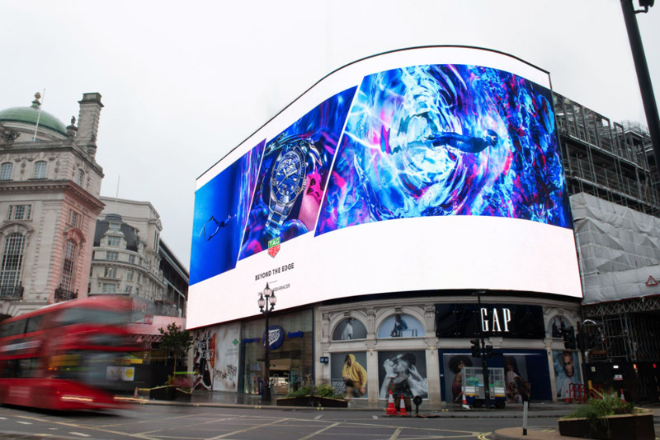
1). Do it online and offline together
Online and offline must be linked. Otherwise, it will be lame. Put a QR code on the LED screen, and the audience can jump to the online event page with a scan, which is very convenient.
For example, a new product is launched with a limited-time discount. When the audience sees it offline, they can scan the code and place an order directly.
Doesn’t this attract people offline or online? Conversely, the data collected online can also help adjust offline strategies.
If a product is found to be particularly popular online, the offline display screen can be highlighted, and even the display time and location can be adjusted to make the advertisement more appealing to the audience.
2). Use multiple channels together
Don’t just focus on LED screens, other advertising channels must also be used together, so that all-round coverage can be achieved.
For example, TV ads have a wide coverage and everyone can see them at home.
Newspaper and magazine ads look reliable, and the in-depth content can attract specific groups of people.
Outdoor billboards and bus and subway ads are seen every day and have a high exposure rate.
Combine these channels with LED screens, such as previewing the exclusive content on the LED screen in TV ads, or putting a small preview of the LED screen event in the newspaper, so that they can leverage each other and expand brand influence.
3). Activities and events must be organized
New product launches, promotions, anniversary celebrations and other big days are the golden moments for brand exposure.
Carrying out special promotions on LED screens, live broadcasting of events, and displaying details of new products can all attract attention.
For example, live broadcasting of new product launches allows viewers to see first-hand information about the products and feel the lively atmosphere on site.
Moreover, organizing some interactive activities, such as online voting, lucky draws, and Q&A, will increase the audience’s sense of participation and deepen their feelings for the brand.
These activities can also trigger topics on social networks and let more people know about your brand.
Factor 4: The number of brand content broadcasts on LED screens
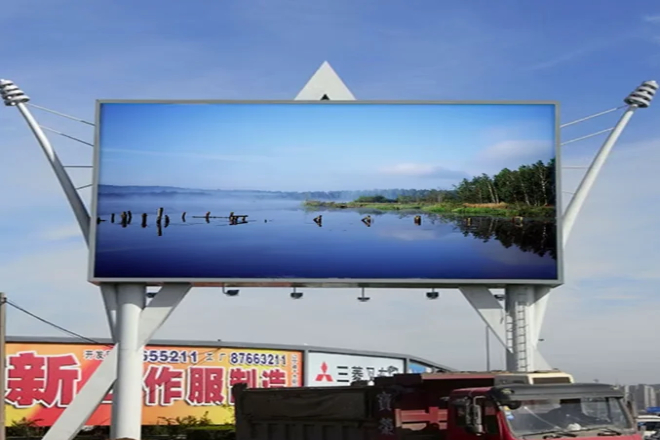
1). The number of broadcasts is important, but don’t just chase the numbers
The number of broadcasts is indeed a key indicator for measuring the effectiveness of LED screens, but you can’t just focus on the numbers.
If the content is broadcast a lot, but the audience forgets it after watching it, it actually does not achieve the expected effect.
The key is to make the audience remember your brand. For example, if an advertisement is broadcast 1,000 times, but the content is too bland, the audience may not remember it once.
On the contrary, if the content is interesting and creative, the audience may be impressed even if it is only broadcast 500 times.
Therefore, the number of broadcasts and the quality of content should be grasped together.
The content should be attractive, such as attracting the audience’s attention through interesting animations, vivid videos or fascinating stories, so that the audience can remember the core information of the brand in a short time.
2). Reasonable arrangement of broadcast time
The broadcast volume cannot be increased by broadcasting all the time. The broadcast time should be arranged according to the activity patterns of the target audience.
For example, the commuting peak hours for office workers are from 8 to 9 in the morning and from 6 to 7 in the evening. At this time, it is best to broadcast advertisements on the LED screens of subway stations and bus stations.
If it is in a commercial area, broadcasting during the peak shopping hours at noon and in the evening can attract more potential customers.
A reasonable arrangement of broadcast time can not only increase the broadcast volume but also make each broadcast more valuable.
For example, brands targeting young people can be broadcast during the evening when young people are active, while brands targeting office workers can be broadcast during the morning and evening peak hours on weekdays.
This ensures that the advertisement reaches the target audience at the most appropriate time and increases the effective broadcast volume of the advertisement.
3). Content updates should be diligent
The audience loves novelty. If the content on the LED screen remains unchanged, they will soon lose interest. Therefore, it is necessary to update the content regularly to keep it fresh.
For example, the advertising content can be updated once a week or adjusted according to different festivals and event themes.
This will not only attract the audience’s attention, but also keep them interested in the brand.
When updating the content, you can combine the current hot topics or launch new product features and promotions.
For example, launch a couple-themed advertisement on Valentine’s Day, and launch a cool and refreshing product advertisement in summer, so that the audience can feel fresh every time they see it, and at the same time increase the brand’s attention and favorability.
五、注意事项
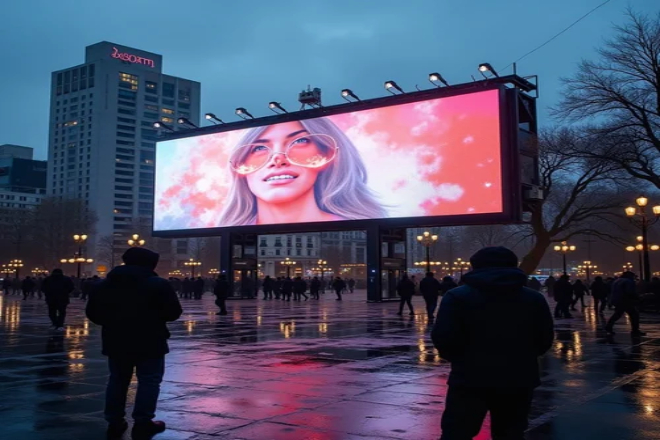
When displaying content on the LED display, be sure to avoid information overload.
The audience’s attention is limited.
If the screen is full of text and complex pictures, the audience will easily feel tired or even ignore the advertisement directly.
Brand information should be concise and clear, highlighting the core selling point. It is best to focus on one theme or one product feature each time the content is played.
For example, if the brand focuses on the high performance of the product, it should focus on displaying performance-related data and scenes instead of displaying multiple unrelated information at the same time.
This not only grabs the audience’s attention, but also makes the brand information easier to remember.
Whether it is the content displayed on the LED display or other online and offline promotional channels, the brand image should be consistent.
This includes brand color, fonts, logos and other elements, these details can enhance the brand’s recognition.
Online and offline brand information should also be updated synchronously.
If a new product is promoted on an LED display, the online official website and social media should also release relevant information simultaneously.
Avoid the audience from seeing inconsistent information on different channels, causing confusion.
The consistency of brand image helps to build brand trust and makes it easier for the audience to identify and remember the brand.
When playing ads, you must pay attention to user experience. The length of the ad should be moderate to avoid too long ads that make the audience feel bored.
Generally speaking, it is more appropriate to control the single playback time to about 15-30 seconds, so that it can convey key information without taking up too much time of the audience.
At the same time, avoid causing interference to the audience.
For example, in some quiet places, such as libraries and 医院, the volume should be appropriately lowered or silent mode should be used to avoid affecting the normal activities of the audience.
A good user experience can improve the audience’s favorability towards the brand.
It is very important to use technical means to monitor the playback effect of the LED display in real time.
By monitoring data such as the number of playbacks and the audience’s stay time, the brand can understand the actual effect of the advertisement.
At the same time, the audience’s feedback is collected through online questionnaires, offline surveys, etc., to understand the audience’s feelings about the advertising content, playback time, playback frequency, etc.
Based on these feedbacks, the brand can adjust the strategy in time, optimize the advertising content and playback plan, so as to improve the advertising effect and return on investment.
It is a basic requirement to ensure that all advertising content complies with local laws and regulations.
Avoid using false propaganda or misleading information, especially in some specific industries, such as the medical and financial industries, and strictly abide by relevant advertising regulations.
At the same time, privacy should be respected. If the advertisement involves user data or personal information, ensure the legal collection and use of the data and respect the user’s privacy.
Compliance and ethics not only help avoid legal risks but also enhance the credibility of the brand.
When formulating the LED display advertising budget, consider the cost and benefits comprehensively.
Don’t blindly pursue high playback volume and ignore the actual effect of the advertisement.
Allocate the budget reasonably to ensure that every penny can bring the greatest return. Regularly evaluate the benefits of advertising, including indicators such as brand awareness and product sales growth.
If it is found that some advertising strategies are not effective, adjust them in time to avoid wasting resources.
Through scientific budget management and benefit evaluation, brands can use limited resources more effectively and improve the comprehensive benefits of advertising.
6. 结论
Through the above analysis of key factors, I believe you have a clear idea of how to use LED display to increase brand exposure.
On the road of marketing, there are many methods, but accurate policy implementation is the key to success.
最后,如果您想了解更多关于LED显示屏的知识, 请与我们联系.
